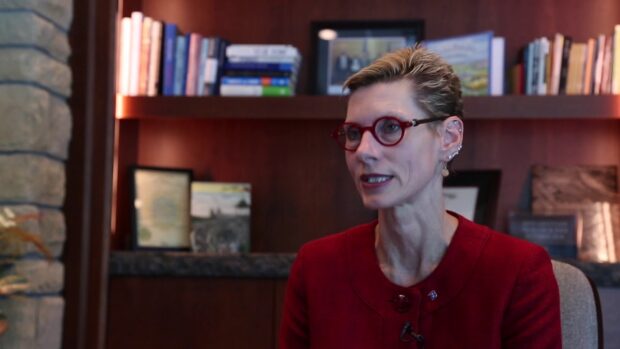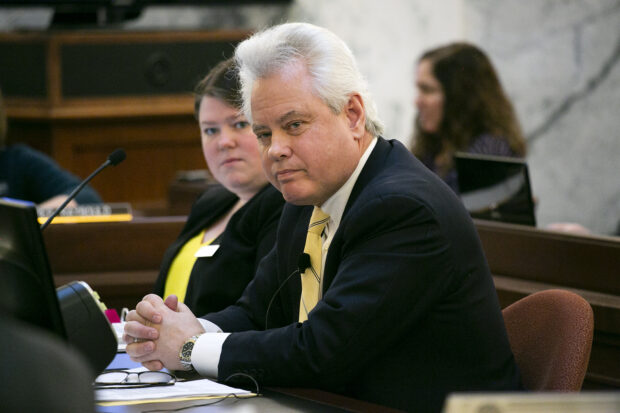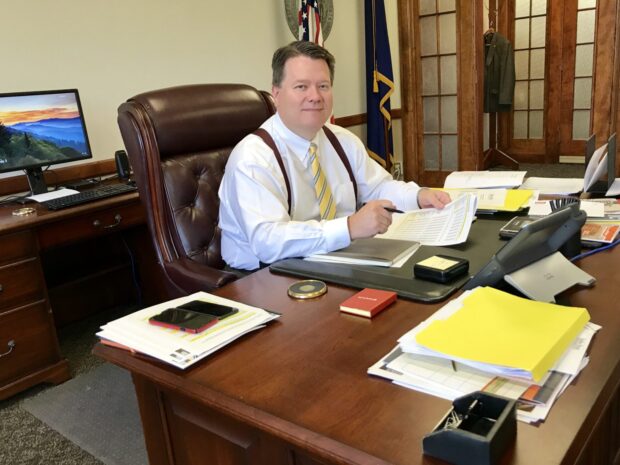(EDITOR’S NOTE: Over the next year, Idaho Education News will provide in-depth, ongoing coverage of the challenges facing higher education during the coronavirus pandemic. Here’s our latest installment in this project.)
On Wednesday morning, a cluster of House Education Committee Republicans took turns grilling Boise State University President Marlene Tromp over social justice issues.

On Wednesday afternoon, only one Senate Education Committee member went down that road — and almost apologetically. Sen. Carl Crabtree, R-Grangeville, delicately asked Tromp about what Boise State has done to reduce its “perceived emphasis” on social justice.
Tromp was just as delicate. No use of the words “diversity” or “inclusion,” and instead a stated commitment to “fairness” and “equity.” “Our focus as an institution is to teach students how to think, not what to think,” she said.
A pithy soundbite, for sure. But this is one of those times where the questions are more telling than the answers. They hint at the state of the debate over higher education in the Idaho Statehouse.
College and university leaders converged at the Capitol over the past few days for a pandemic version of “Education Week.” As administrators delivered a series of virtual budget pitches and presentations, they talked about the upheaval of 2020 — not just on campus, of course, but in the Statehouse. It was tough to get a higher education budget passed in 2020, Idaho State University President Kevin Satterlee said on multiple occasions, and college and university presidents heard lawmakers loud and clear.
A slight clarification: It was tough to get a higher education budget through the House.
Hardline conservatives killed two versions of the budget. Even as Idaho began reporting its first coronavirus cases — and as legislators scrambled to finish their winter’s work under the darkening cloud of the pandemic — critics said the four-year institutions were spending too much and straying too far from the political mainstream. The budget fashioned into a bludgeon, the impasse continued for several days.
In the end, the House whittled less than $1.2 million from a budget that included more than $628 million in tax dollars, student tuition and fees and endowment dollars.
And once the House finally finished its work, the Senate approved the higher education budget bill unanimously.
This all illustrates the sharp — and longstanding — differences between the two chambers. Historically, the House is more conservative, the Senate more moderate.
The breakdown by political party is a secondary factor, and really, the numbers usually aren’t that different. (This year, Republicans hold a 58-12 advantage in the House and a slightly smaller 28-7 supermajority in the Senate). If anything, the House GOP caucus is more conservative than it was a year ago, as the elections have shifted the balance of power even further to the right. And some House conservatives have clearly shown up in 2021 ready for battle.
When State Board of Education Executive Director Matt Freeman showed up at House Education for a budget presentation Thursday, he fielded a battery of questions about Gov. Brad Little’s higher education budget recommendations — including a plan to drain a state savings account to offset $14.2 million in coronavirus-related revenue losses.

And when University of Idaho President C. Scott Green made his budget pitch to the Joint Finance-Appropriations Committee Monday, Rep. Priscilla Giddings was ready. Giddings — a White Bird Republican, and one of two House hardliners added to JFAC this year — pressed Green about a Black Lives Matter page on the U of I website, and the College of Engineering’s decision to hire a director of diversity, inclusion and outreach.
Green described the Black Lives Matter page as an attempt to provide a balanced selection of materials on the controversial topic. And he said the engineering diversity director’s salary does not come from state tax dollars, but instead from an Idaho industry that wants to see more women studying the STEM disciplines of science, technology, engineering and math. Green did not identify the donor; on Thursday, College of Engineering Dean Larry Stauffer said Micron Technology was one donor, but alumni were the primary donors.
JFAC will get its turn with Tromp Friday. But since her arrival in Idaho in July 2019, Tromp has been a lightning rod on diversity and inclusion issues. And in December, the Idaho Freedom Foundation co-authored a white paper that decried social justice education at Boise State as “no longer in its infancy,” and urged state leaders the act before the movement grows to maturity.

Among other things, the paper recommends dividing the higher education budget bill by institution, the better to punish a college or university that strays too far into activism. (Which all raises the question: How hard would it be to get the House to sign on to four higher ed budgets?)
No matter. In 2021, one higher education budget bill should be more than enough to generate some fireworks.
The presidents came to the Statehouse, virtually, with a unified message of frugality.
In the wake of the pandemic, state budget cuts and enrollment declines, the four four-year institutions reinvested and reduced spending to the tune of $77.3 million and eliminated 493 positions. “It was not easy, and in some cases it is not sustainable in the long run,” Satterlee told lawmakers. With what was left, he said, the institutions focused on the basics, such as enrollment, reaching out to rural communities, and preparing graduates who will meet industry needs.
In a few weeks, lawmakers will weigh in. If 2021 plays out like 2020, House members are apt to be skeptical, while senators could prove to be sympathetic.
Each week, Kevin Richert writes an analysis on education policy and education politics. Look for it every Thursday.
More in-depth higher education coverage
Aug. 6: A pandemic makes old problems worse for Idaho higher education
Aug. 12: Idaho campuses prepare to reopen, but will students show up?
Aug. 24: Across the state, campuses open for an uncertain new year
Sept. 24: The feds’ coronavirus aid fills some gaps, but only some
Oct. 8: Boise State faces a financial reckoning
Nov. 3: New Boise State program seeks to guide students through gap year
Nov. 12: In a pandemic, colleges struggle even more to attract Idaho graduates
Dec. 3: One semester down, a tougher semester ahead
Jan. 5: Instead of going on, Idaho high school graduates stayed home
